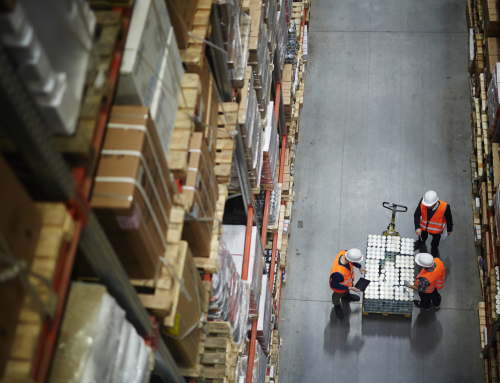Everything else is on-demand. Warehousing should be no exception.
We live in an interesting time. Trade wars and tariffs, natural disasters and cyberterrorism — and add to all that, today’s customers are demanding that practically everything be delivered overnight. Sure, we have AI and other advanced technologies helping us cope. But, at the end of the day, it all comes down to this: Never before has success ridden so much on the flexibility of your supply chain.
Enter on-demand warehousing.
Think of it as a tool to manage change. Perhaps you need 5,000 square feet of inventory storage for three months. Perhaps your seasonal business requires lots of space now but almost none in a few months. Perhaps you want to explore expanding into other parts of the country but would like to minimize risk with an incremental approach until the growth forecast solidifies.
The concept of on-demand warehousing is straightforward: It brings vacant warehouse space to market with a technology platform — like Warehowz — that helps businesses like yours find the space and services they need.With a market value at around $20 billion, there are 4 billion square feet of vacant warehouse space in the United States within existing occupied warehouses. That’s more than 20 times the distribution footprint of Amazon! Warehowz offers warehouse operators an opportunity to fill that space, converting cost to revenue — and gives you a hands-on tool to build a responsive supply chain.
Put to practice, here’s how it works:
1. On-demand warehousing lets you tap into services and unused space.
You need warehouse space — now. But while phone calls to potential warehouses may take minutes, lease negotiations stretch out over weeks, if not months. Hiring a contract logistics partner (3PL) tends to be an equally drawn-out process — the setup may take six months to a year — and often requires you to provide a forecast that runs the risk of being off-target, leaving you with too little space or paying penalty charges.
On-demand warehousing presents a new, agile approach. Log onto the Warehowz platform and access a network of available warehouse spaces and services across the country. You type in what you need, when you need it, where you need it. They list the space and services they can offer — when they have availability, where they have availability. It’s that easy to use.
2. It helps you avoid fixed costs.
Traditional warehouse leases routinely require a commitment of three to five years. This might be the correct approach if you have a robust forecast and little seasonality.
However, if uncertainty clouds your forecast or your business is highly seasonal, consider the fixed cost commitment of leasing a 50,000-square-foot facility for three years is about $1 million.
Regardless of whether you use it all or not, you still pay the same amount. And, if you suddenly need more space, you will need to scramble to make a plan. In contrast, on-demand warehousing is flexible. You pay as you go, for the space you need. Paying for space during low season? You no longer have to. Do you need extra space during peak periods? On-demand warehousing is the answer.
3. It comes with low minimum storage requirements.
Sometimes a little is just enough. But until the arrival of on-demand warehousing, it didn’t make financial sense for warehouses to accommodate a relatively small amount of inventory when they had large spaces to fill. Now, on-demand warehousing has introduced a new way of doing business: pooling the supply of vacant space and matching it with demand from the growing number of online retailers and startups. Suddenly, due to pooled volumes and streamlined processes, lowering the minimum storage requirements can bring financial benefits to warehouses. That gives you more options — at a lower cost.
4. It allows you to dynamically add warehouse space and services to facilitate growth.
Do you see potential to establish your business in a different part of the country? On-demand warehousing allows you to grow and contract in tune with your business needs. It enables step-by-step change, negating the need to rent too much space, for too long, for too much money, while you wait for your business plan to pan out.
In a sense, it allows you to take risks — and reap the potential rewards — without putting everything on the line.
Warehouse services are just as important to the on-demand warehousing concept. They free up your product company to focus on your core business challenges by shifting the burden of your operational challenges to a scalable network of pick, pack, and ship providers around the country.
5. It’s the way of the future.
We’ve grown accustomed to our everyday world steadily becoming smarter, more flexible, and efficient. We download entire TV series to watch at our leisure, browse Airbnb for one-of-a-kind places to stay, turn off lights with a tap on a smartphone, and expect packages to arrive at an increasingly faster rate. On-demand warehousing brings those same principles to a segment of the supply chain that, until recently, offered little flexibility. And those speedy package arrivals, by the way, come easier with on-demand warehousing, as it allows you to locate space closer to your customer base.
The future demands flexible supply chains. Warehowz gives you the tool to take the lead.

Read more:



